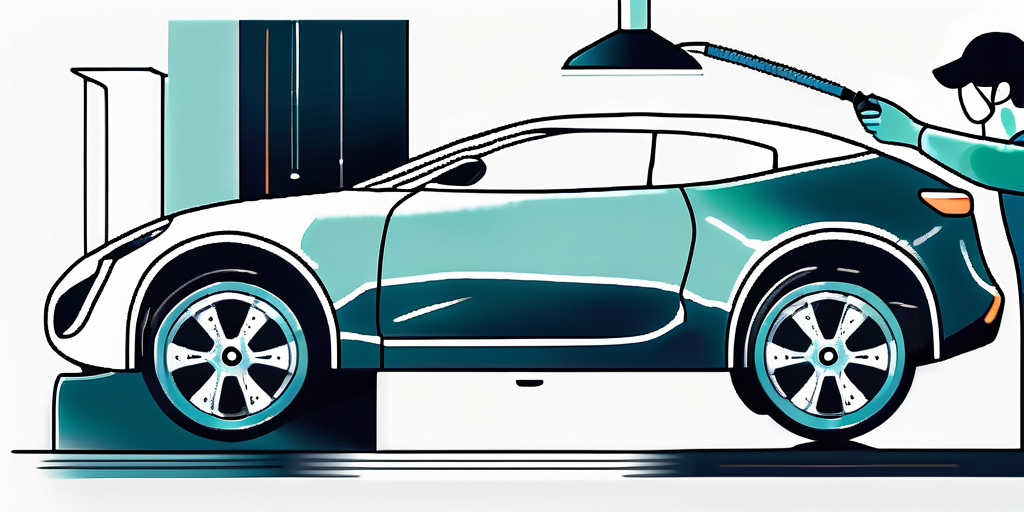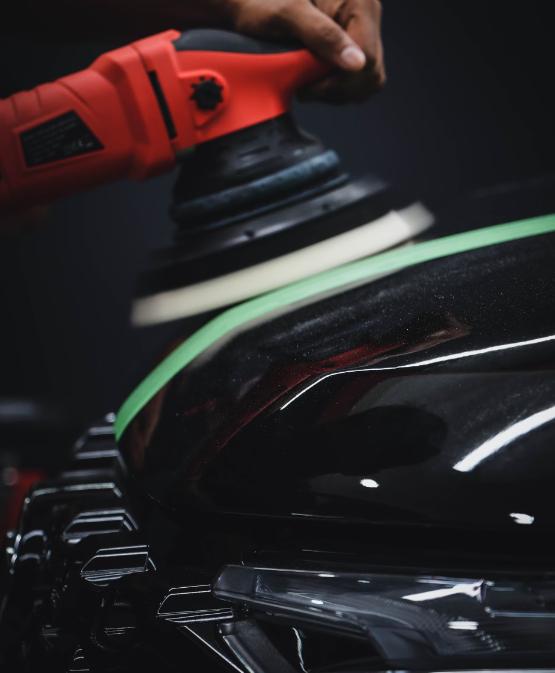What is Buffing? Explained by AvalonKing
Buffing, a term often used in the automotive industry, refers to the process of smoothing out and polishing a surface, typically a car's exterior, to achieve a shiny, mirror-like finish. This technique is a crucial part of the ceramic coating process, as it helps to prepare the surface for the application of the coating. AvalonKing, a leading brand in the ceramic coating industry, has a wealth of knowledge and expertise in this area.
Buffing is not just about making a car look good. It also plays a significant role in maintaining the car's exterior, protecting it from minor scratches, dirt, and other elements that can cause damage over time. However, the process of buffing requires a certain level of skill and understanding to be done correctly. This article will delve into the intricacies of buffing as explained by AvalonKing.
The Basics of Buffing
Buffing is a two-step process that involves the removal of a thin layer of paint from the car's surface and then polishing it to achieve a high gloss finish. The first step, known as cutting, uses a compound that contains abrasive materials to remove minor scratches, swirl marks, and other imperfections. The second step, known as polishing, uses a less abrasive compound to smooth out the surface and give it a shiny finish.
While buffing might seem like a straightforward process, it requires a keen eye and a steady hand. Too much pressure or using the wrong type of compound can result in more harm than good. Therefore, it's crucial to understand the different types of buffing compounds and techniques before attempting to buff a car's surface.
Types of Buffing Compounds
Buffing compounds come in various forms, each designed for a specific purpose. The most common types include cutting compounds, polishing compounds, and finishing compounds. Cutting compounds are the most abrasive and are used to remove deep scratches and heavy oxidation. Polishing compounds are less abrasive and are used to remove light scratches and swirl marks. Finishing compounds are the least abrasive and are used to give the surface a final polish and a high gloss finish.
Choosing the right buffing compound depends on the condition of the car's surface. For instance, a car with deep scratches and heavy oxidation would require a cutting compound, while a car with light scratches and swirl marks would benefit from a polishing compound. It's also important to note that different compounds require different buffing pads. For example, cutting compounds require a more aggressive pad, while finishing compounds require a softer pad.
Buffing Techniques
Buffing techniques can vary depending on the type of compound used and the condition of the car's surface. However, there are a few general rules to follow. First, always start with the least aggressive method. This means starting with a less abrasive compound and a softer buffing pad. If this doesn't remove the imperfections, then move on to a more aggressive method.
Second, always work in small sections. This allows for more control and ensures that the compound doesn't dry out. Third, use the right amount of compound. Too much can make the process messy and difficult to control, while too little might not be effective. Lastly, always buff at the right speed. Too fast can cause the paint to burn, while too slow might not be effective.
The Role of Buffing in Ceramic Coating
Buffing plays a crucial role in the ceramic coating process. Before a ceramic coating can be applied, the car's surface needs to be as smooth and free of imperfections as possible. This is where buffing comes in. By removing minor scratches, swirl marks, and other imperfections, buffing prepares the surface for the ceramic coating, ensuring that it adheres properly and lasts longer.

Moreover, buffing also enhances the appearance of the ceramic coating. A well-buffed surface will result in a ceramic coating that is shinier and more reflective. Therefore, buffing is not just a preparatory step, but also a crucial part of achieving the desired finish.
Preparing the Surface
Before buffing can begin, the car's surface needs to be thoroughly cleaned. This involves washing the car with a high-quality car shampoo to remove dirt, dust, and other contaminants. After washing, the car should be dried using a microfiber towel to prevent water spots.
Once the car is clean and dry, a clay bar can be used to remove any remaining contaminants that are embedded in the paint. This leaves the surface smooth and ready for buffing. It's important to note that the car should be kept in a cool, shaded area during this process to prevent the paint from heating up.
Applying the Buffing Compound
Applying the buffing compound is a delicate process that requires precision and patience. The compound should be applied to a buffing pad and then spread onto a small section of the car's surface. The buffer should be turned on at a low speed to spread the compound evenly. Once the compound is spread, the speed can be increased to buff the surface.
The buffer should be moved in a back-and-forth motion, overlapping each pass to ensure an even finish. The pressure should be light to medium, as too much pressure can cause the paint to burn. Once the compound has been buffed, the surface should be wiped clean with a microfiber towel. This process should be repeated until the entire car has been buffed.
Common Mistakes to Avoid
Despite its benefits, buffing can cause damage if not done correctly. One common mistake is buffing too aggressively. This can remove too much paint and leave the surface uneven. Another mistake is using the wrong type of compound or buffing pad. This can result in a finish that is too dull or too shiny.
Moreover, buffing in direct sunlight or on a hot surface can cause the compound to dry out too quickly, making it difficult to buff and potentially causing damage. Lastly, not cleaning the car properly before buffing can result in contaminants being buffed into the paint, causing more scratches and swirl marks.
Using the Wrong Compound or Pad
Using the wrong compound or pad can result in a finish that is not as desired. For instance, using a cutting compound when a polishing compound is needed can leave the surface too dull. Similarly, using a hard pad when a soft pad is needed can leave the surface too shiny. Therefore, it's crucial to understand the different types of compounds and pads and how they affect the finish.
Moreover, using a dirty pad can also cause damage. A dirty pad can contain contaminants that can scratch the paint. Therefore, it's important to clean the pad regularly and replace it when it becomes too worn or dirty.
Buffing in Direct Sunlight or on a Hot Surface
Buffing in direct sunlight or on a hot surface can cause the compound to dry out too quickly. This can make it difficult to buff and potentially cause damage. Therefore, it's recommended to buff in a cool, shaded area. If this is not possible, then the surface should be cooled down with water before buffing.
Moreover, a hot surface can cause the paint to soften, making it more susceptible to damage. Therefore, it's important to let the car cool down before buffing. If the car has been sitting in the sun, it should be moved to a shaded area and allowed to cool down before the buffing process begins.
Conclusion
Buffing is a crucial part of the ceramic coating process. It not only prepares the surface for the coating but also enhances its appearance. However, it's a process that requires skill, understanding, and patience. By following the right techniques and avoiding common mistakes, one can achieve a finish that is not only beautiful but also durable.
Remember, the goal of buffing is not just to make the car look good, but also to protect its exterior. Therefore, it's worth taking the time to learn how to do it properly. Whether you're a professional detailer or a car enthusiast, understanding the intricacies of buffing can help you achieve the best possible results.
Ready to achieve that perfect shine on your vehicle? Look no further than AvalonKing for all your car cleaning needs. From top-of-the-line ceramic coatings to premium car shampoos, we have everything you need to keep your car looking its best. With years of expertise in providing the very best products, AvalonKing is your go-to source for vehicle care. Check out our products today and take the first step towards a flawless finish for your car.










